Culture op-ed
Creating new spaces and new ‘publics’ in towns
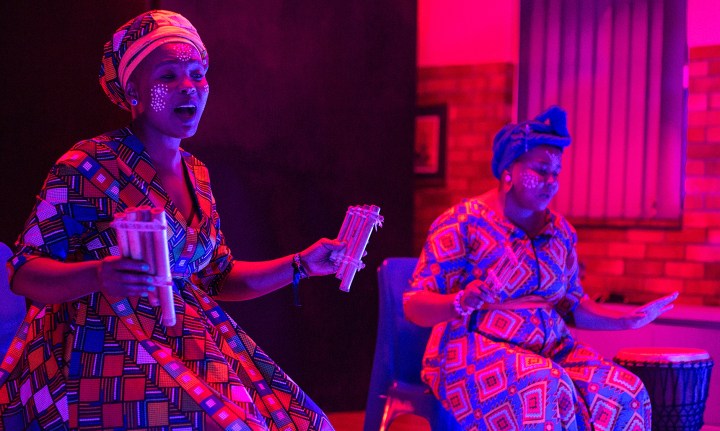
Public art is a powerful medium for healing, particularly in towns where visible marks of trauma and a history of violence remain. This is well recognised in policy, and in South Africa festivals are a popular way of championing arts and culture. After two years of Covid-19 restrictions, cultural events are starting up again, with the Klein Karoo National Arts Festival one of the first to return.
Tayla Damons wants to shout out to the world: “I’m from Oudtshoorn.” But it hasn’t always been that way. The past six months have changed her, she says, poetically describing the project responsible for her new emotional connection: “Being part of this visual arts team is like hearing a beat and one day I started versing on it. They have given me new eyes to look at things. Suddenly (the town) is not just dust: I can put shape, colours and words on it, and create a whole picture.”
Damons, a young woman from Bridgton, is part of an oral history project called Karoo Kaarte (Karoo Map) which culminated at the Klein Karoo National Arts Festival (KKNK) held in Oudtshoorn in March. Curated and facilitated by visual artist Vaughn Sadie and theatre-maker Neil Coppen, the team includes local writers, arts leaders, educators and young people from neighbouring De Rust, Dysselsdorp, Bridgton, Bongolethu and Central Oudtshoorn to, according to the facilitators, “collectively reflect on their sense of place and belonging in the different regions they reside in, while collectively imagining a more inclusionary future vision of Oudtshoorn”.
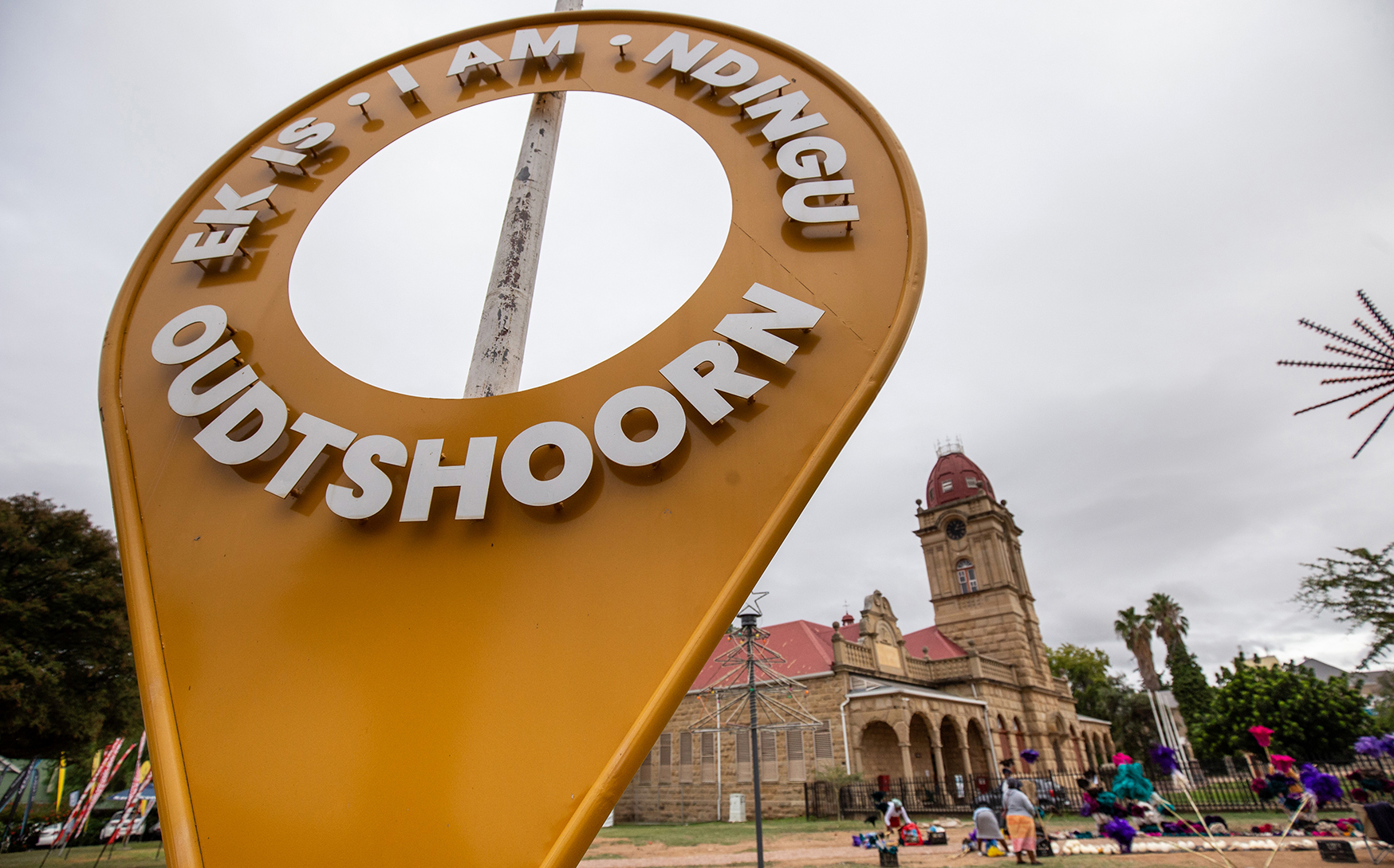
Oudsthoorn has hosted the Klein Karoo National Arts Festival (KKNK) since 1994,
which returned in March 2022 after a two-year hiatus due to the Covid-19 pandemic.
(Photo: Ashraf Hendricks)
Public art is a powerful medium for healing, particularly in towns where visible marks of trauma and a history of violence remain. This is well recognised in policy, and in South Africa festivals are a popular way of championing arts and culture. After two years of Covid-19 restrictions, cultural events are starting up again, with the KKNK festival one of the first to return.
Playwright Mike van Graan, who is the coordinator of the Sustaining Theatre and Dance (STAND) Foundation and a former board member of the KKNK, explains that the festival was founded in 1994 as “an initiative to preserve and celebrate particularly white Afrikaans arts and culture – with the impending loss of political power at the ballot box”. The success of the festival sparked similar festivals around the country – Aardklop in Potchefstroom, Innibos in Mpumalanga, the Vrystaat Arts Fest in Bloemfontein, Woordfees in Stellenbosch and Suidoosterfees in Cape Town. The KKNK has evidently changed over time and endeavoured to become more inclusive and representative, although clear challenges remain.
In the context of Covid-19, celebrating the arts in outdoor public spaces not only helps to ensure health and safety, but also effectively brings movement and activity back to our towns. The reality is less simple, however: with restrictions still in place and differing perceptions of what is deemed safe, not to mention shrinking budgets, the festival was in fact largely held in private spaces or ringfenced areas to ensure access control. It was a poignant reminder of how public space is changing but equally how crucial it is to address old challenges.
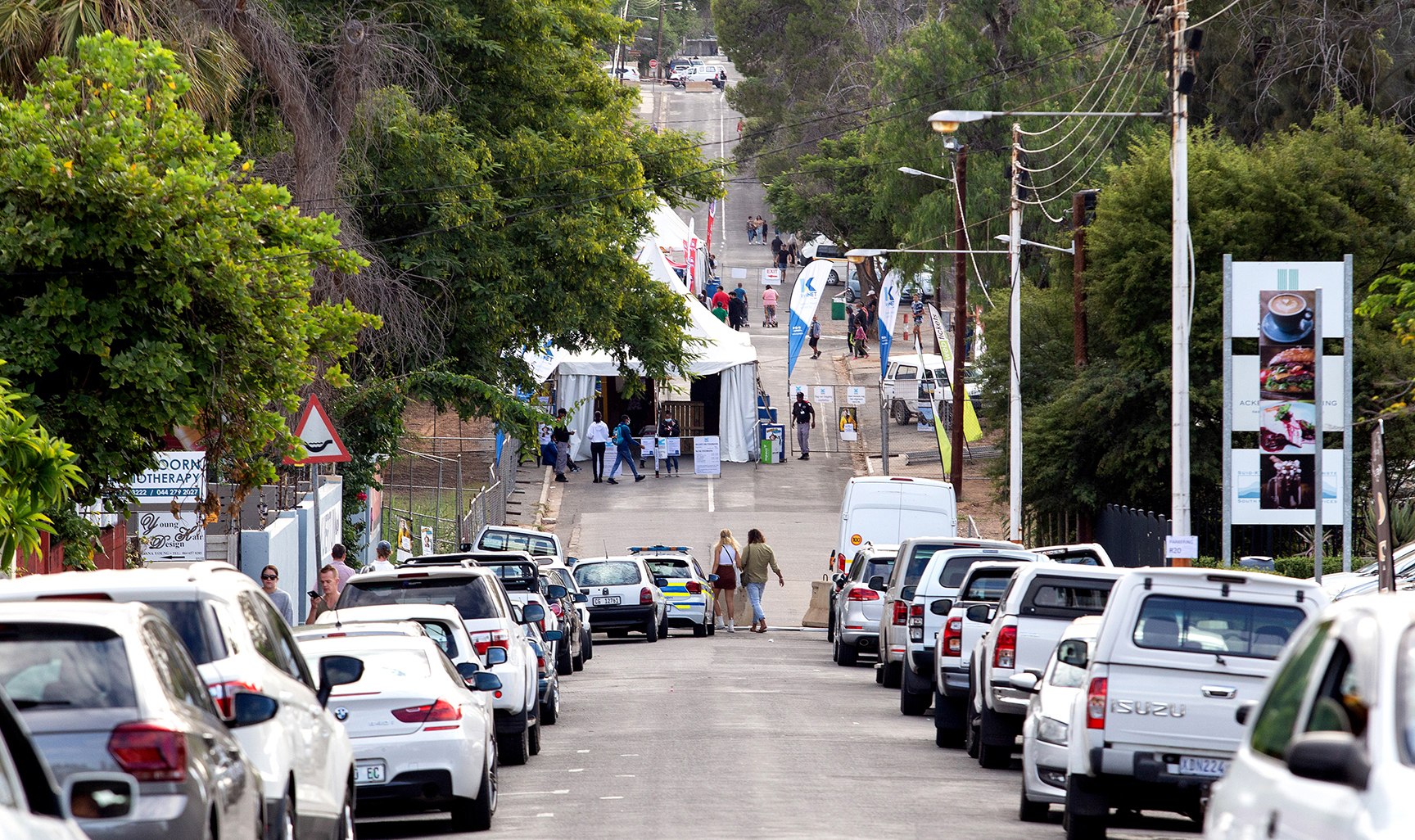
All Klein Karoo National Arts Festival (KKNK) performance spaces were cordoned off to control access and ensure compliance with Covid-19 safety regulations.
(Photo: Ashraf Hendricks)
Creating ‘publics’ and rethinking space
Given that in South Africa physical places are tarnished by a history of exclusion and often lack decent safety measures and proper maintenance, Sadie stresses the importance of going beyond the traditional idea of public space. The focus must be on creating “moments of interaction and disruption” through dialogue and conversation. In Oudtshoorn, his team facilitated the creation of “self-portraits” by local residents – not always the audience at the festival – depicting their street or neighbourhood. This was done through the creation of collages using images from the CP Nel Museum and KKNK archives. The process of self-discovery and beautiful aesthetics was evident in the artworks exhibited at the festival.
Yet, as Vaughn explains, these are “micro-publics” within the broader context of society and the young people who participated in the project shared useful insights.
Meiko Jaftha from Bridgton defines public space as where “anyone can go, even if they are not from that place”. Easier said than done in South Africa, where access is not only limited by physical fences, but also invisible barriers linked to history, socioeconomic disparities and a fractured sense of belonging.
Similarly, Sebiena Beukes, also from Bridgton, acknowledges there are libraries in Oudtshoorn, but she wants one in her neighbourhood. She points to the importance of physical access, appropriateness and ownership. The library of Beukes’s dreams looks nothing like a conventional library but a place where people can hear the “stories behind history”, where visual art is a key component and where all feel welcome. It is not just a place where information is stored, but also where it is created.
Local artist Glenisha Tarentaal, a Karoo Kaarte team member, describes growing up in Oudtshoorn where the caretaker looked after the local park which she enjoyed going to, as well as the children, ensuring everyone “had a chance to take a turn on the swing”. As she grew older, she found fewer reasons to use the park, but remembers with fondness that her engagement was also held there.
However, enabling multiple uses for public space doesn’t happen accidentally. Programming is crucial to encourage the use of the space and the creation of new stories and associations. Sadie says the ultimate aim of festivals like KKNK should be to give people the opportunity to take direct action in creating spaces and stories, rather than being passive consumers.
This is especially true for those who might not connect with “fine art” due to perceptions or the historical lack of access to most designated events and spaces. In Oudtshoorn, as in any other town, people are looking for a vehicle to express, connect and create new ways to engage with spaces. Listening to the Karoo Kaarte project participants, it was clear that new publics had indeed been created in terms of audiences and through new forms of engagement.

Left, Tayla Damon and Colin Meyer, members of Karoo Karte, an oral history project
share how the project positively changed their views on their town in the last six months.
(Photo: Ashraf Hendricks)
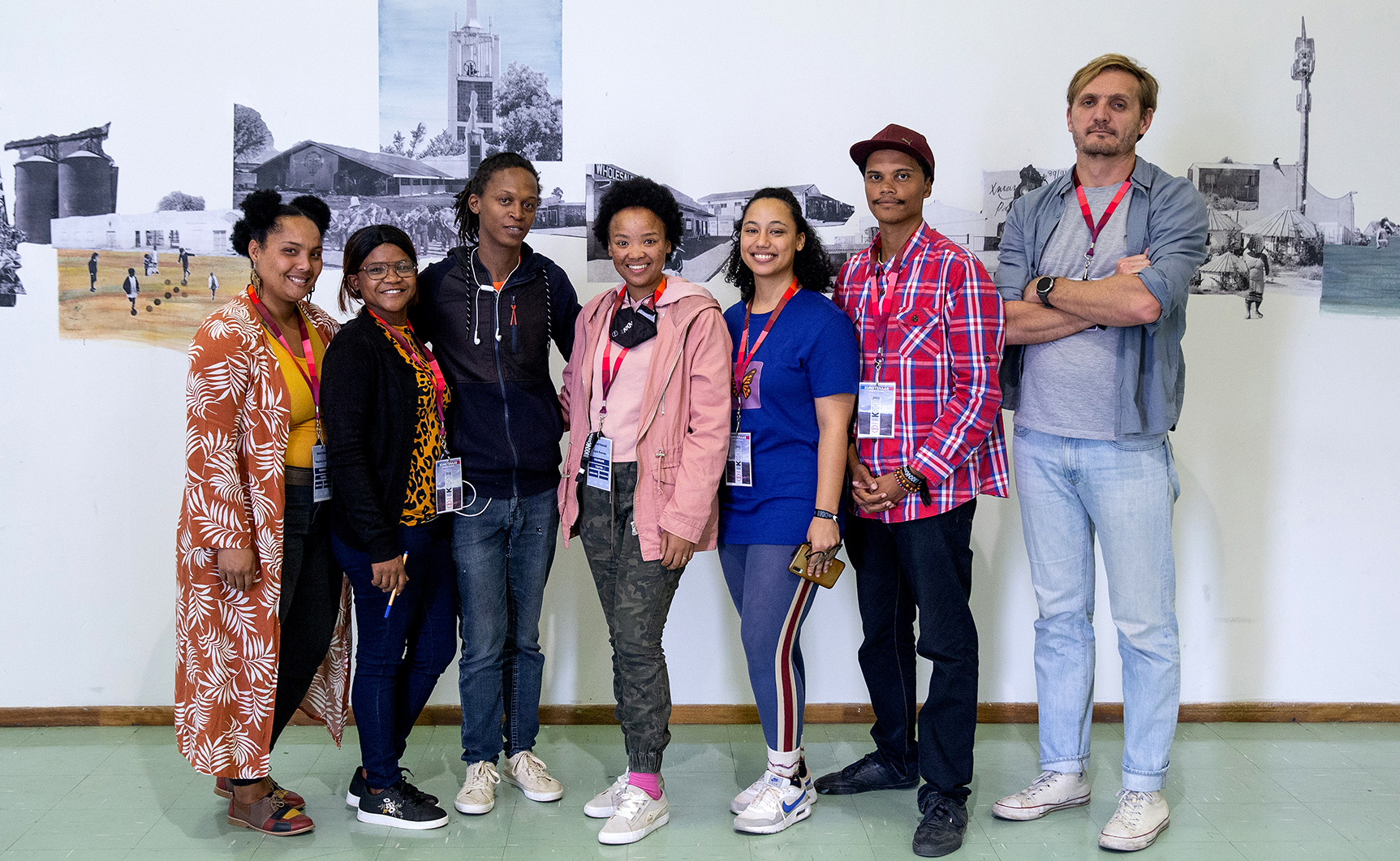
Members of the Karoo Karte project with curator and facilitator Vaughn Sadie in front of a mural they created using images from the CP Nel Museum archive. (Photo: Ashraf Hendricks)
Driving change from the top
According to Lluwellyn Coetzee, acting director for strategic sectors at the municipality, Oudtshoorn identifies arts and culture as key drivers of development in the town. Unsurprisingly, the festival is seen as a priority by the government and there are plans to establish an arts academy as a legacy to support local talent and to create opportunities across the festival process.
There are other policies at national level, such as the revised Small Town Regeneration Strategy promoting efforts, not only by the government, to invite collaboration and participation in placemaking. Istell Orton from Citeplan, one of the authors of the strategy, highlights the importance of identifying what matters most to a town, such as the unique elements that people can feel proud of. Connecting with existing networks and “champions”, she says, is key to enable action.
Coetzee agrees that the impact a festival like KKNK has is far beyond contributing to the public purse: “There is an opportunity through culture to create social cohesion and working as a collective and better understanding and supporting each other. We see the potential of using culture as a means of working together.”
Julio Iglesias was here
Jaftha points to an image she found in a section of the archive called “Ostrich Ostrich” which shows the famous Spanish singer Julio Iglesias performing on a stage with ostrich-feather brooms in the background. There is little information about the concert itself, whether it took place in Oudtshoorn or elsewhere, yet it marks an important moment of international relevance that makes the memory, accurate or not, a source of pride.
The festival has indeed brought an incredible number of artists and acts to Oudtshoorn. Likewise, local talent has reached the national stage and initiatives such as the proposed arts academy could help young people pursue training in the arts and related fields, which could advance a cultural agenda more broadly.
In the future, Beukes says she would like the KKNK to be free for everyone, or at least cheaper, which few disagree with, including the festival organisers. Despite their aim to improve access, festival general manager Lizané Basson highlights the challenges around funding this year, following the Covid-19 hiatus.
The reality, however, is that significant resources are needed to make these events happen. While there is government contribution, most festivals rely heavily on sponsors who naturally have demands in terms of visibility and branding.
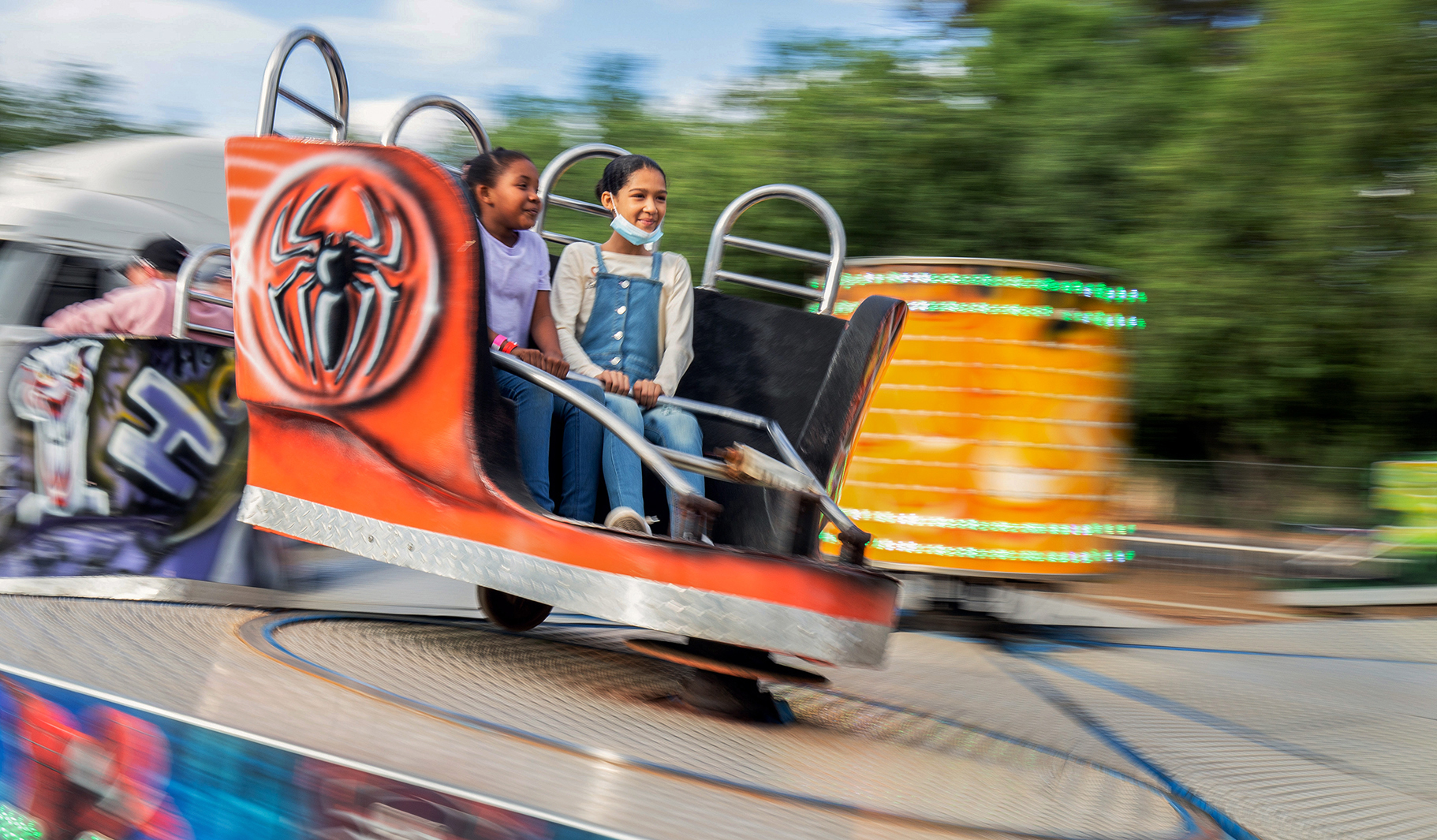
The Klein Karoo National Arts Festival (KKNK) festival also includes a section with fun rides where old and young can play.
(Photo: Ashraf Hendricks)
Sadie points to the value of engaging with funders from the outset about how to measure success, since not everything is easily quantifiable. And while it is important to ensure that resources “address multiple concerns”, there is something to be said for using people’s pure joy and excitement as an indicator.
Festivals like KKNK provide a window into the beauty and the richness of South Africa’s heritage. Beyond economic benefits, they improve the wellbeing of residents in the hosting town through the relationships and stories built. While intangible in the short term, these elements help to build a more resilient society and in Damons’s words, provide the beat to which we can all verse and shape a new vision in the process. DM/ MC/ ML
Marcela Casas works as a programme lead for the Western Cape Economic Development Partnership (EDP). As part of its focus on building partnerships around inclusive, sustainable economic development, the EDP recently launched a Changemakers Town Network, a national learning and support network aimed at boosting the efforts of cross-sectoral stakeholders to regenerate small towns and regions. This series is supported by the Heinrich Böll Stiftung Southern Africa.
















 Become an Insider
Become an Insider
Comments - Please login in order to comment.